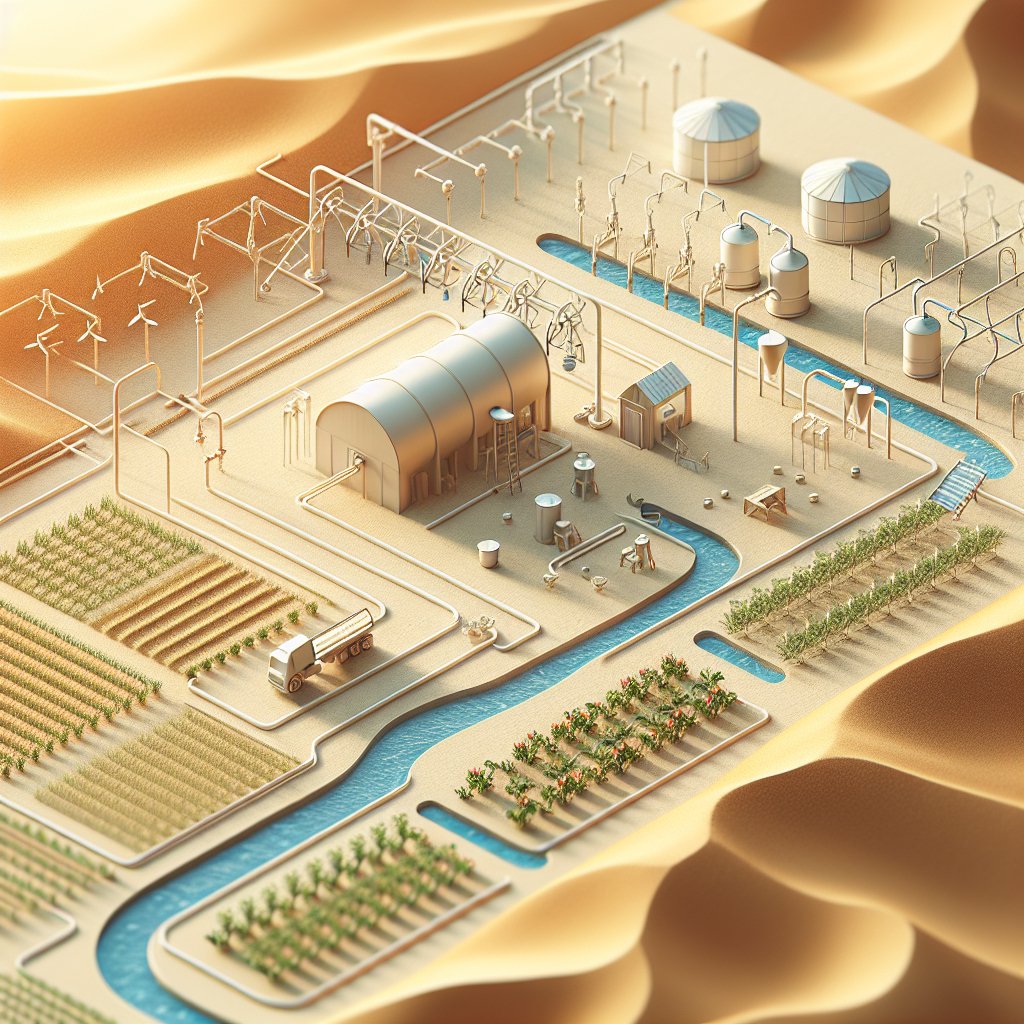
Setting up a sustainable irrigation system in dry climates is a crucial step towards ensuring water efficiency and agricultural productivity. As water scarcity becomes an increasingly pressing issue, especially in arid regions, the need for innovative and sustainable irrigation solutions is more important than ever. This article explores the key components and strategies for establishing an effective irrigation system that not only conserves water but also supports the long-term health of the environment and agricultural lands.
Understanding the Challenges of Dry Climates
Dry climates present unique challenges for agriculture, primarily due to limited water availability and high evaporation rates. These regions often experience prolonged periods of drought, making it difficult for traditional farming methods to sustain crop growth. The lack of natural precipitation necessitates the use of irrigation systems to supplement water needs. However, the implementation of such systems must be carefully planned to avoid over-extraction of water resources and to ensure that the water used is distributed efficiently.
One of the primary challenges in dry climates is the management of soil moisture. The high temperatures and low humidity levels can lead to rapid evaporation, reducing the effectiveness of irrigation efforts. Additionally, the soil in these regions is often sandy or rocky, which can further complicate water retention and distribution. Understanding these challenges is the first step in designing a sustainable irrigation system that can adapt to the specific conditions of dry climates.
Components of a Sustainable Irrigation System
A sustainable irrigation system in dry climates should incorporate several key components to maximize water efficiency and minimize environmental impact. These components include:
1. Efficient Water Sources
Identifying and utilizing efficient water sources is critical in dry climates. Groundwater, rainwater harvesting, and treated wastewater are potential sources that can be tapped into. Groundwater extraction should be carefully monitored to prevent depletion, while rainwater harvesting systems can be designed to capture and store rainwater during infrequent rainfall events. Treated wastewater, or greywater, can also be a valuable resource, provided it is properly treated to remove contaminants.
2. Drip Irrigation Systems
Drip irrigation is one of the most efficient methods of watering crops in dry climates. This system delivers water directly to the plant roots through a network of tubes and emitters, minimizing evaporation and runoff. Drip irrigation systems can be customized to suit the specific needs of different crops and soil types, ensuring that water is used effectively and efficiently.
3. Soil Moisture Sensors
Incorporating soil moisture sensors into an irrigation system can greatly enhance its sustainability. These sensors provide real-time data on soil moisture levels, allowing farmers to adjust irrigation schedules based on actual needs rather than predetermined schedules. This not only conserves water but also prevents overwatering, which can lead to soil erosion and nutrient leaching.
4. Automated Control Systems
Automated control systems can further improve the efficiency of irrigation systems by using data from soil moisture sensors and weather forecasts to optimize watering schedules. These systems can be programmed to adjust irrigation based on factors such as temperature, humidity, and wind speed, ensuring that water is applied only when necessary and in the right amounts.
Strategies for Implementing Sustainable Irrigation
Implementing a sustainable irrigation system in dry climates requires careful planning and consideration of various factors. Here are some strategies to consider:
1. Conducting a Water Audit
Before setting up an irrigation system, it is essential to conduct a water audit to assess the current water usage and identify areas for improvement. This involves analyzing water sources, distribution methods, and consumption patterns to determine the most efficient ways to use water. A water audit can help identify leaks, inefficiencies, and opportunities for conservation.
2. Selecting Appropriate Crops
Choosing crops that are well-suited to dry climates can significantly reduce water requirements. Drought-resistant crops, such as sorghum, millet, and certain varieties of beans, are better adapted to arid conditions and require less water to thrive. Additionally, crop rotation and intercropping can improve soil health and reduce water needs by promoting biodiversity and natural pest control.
3. Implementing Mulching Techniques
Mulching is an effective technique for conserving soil moisture and reducing evaporation. By covering the soil with organic or inorganic materials, such as straw, wood chips, or plastic sheeting, mulching helps retain moisture, suppress weeds, and regulate soil temperature. This can lead to more efficient water use and healthier crops.
4. Educating and Training Farmers
Education and training are vital components of implementing sustainable irrigation systems. Farmers need to be equipped with the knowledge and skills to manage and maintain these systems effectively. This includes understanding the principles of water conservation, the operation of irrigation equipment, and the use of technology to monitor and optimize water use. Training programs and workshops can provide valuable resources and support for farmers in dry climates.
Conclusion
Setting up a sustainable irrigation system in dry climates is a complex but essential task for ensuring agricultural productivity and environmental conservation. By understanding the challenges of dry climates and incorporating efficient components and strategies, farmers can create irrigation systems that maximize water efficiency and support the long-term health of their lands. As water scarcity continues to be a global concern, the adoption of sustainable irrigation practices will play a crucial role in securing food production and preserving natural resources for future generations.

